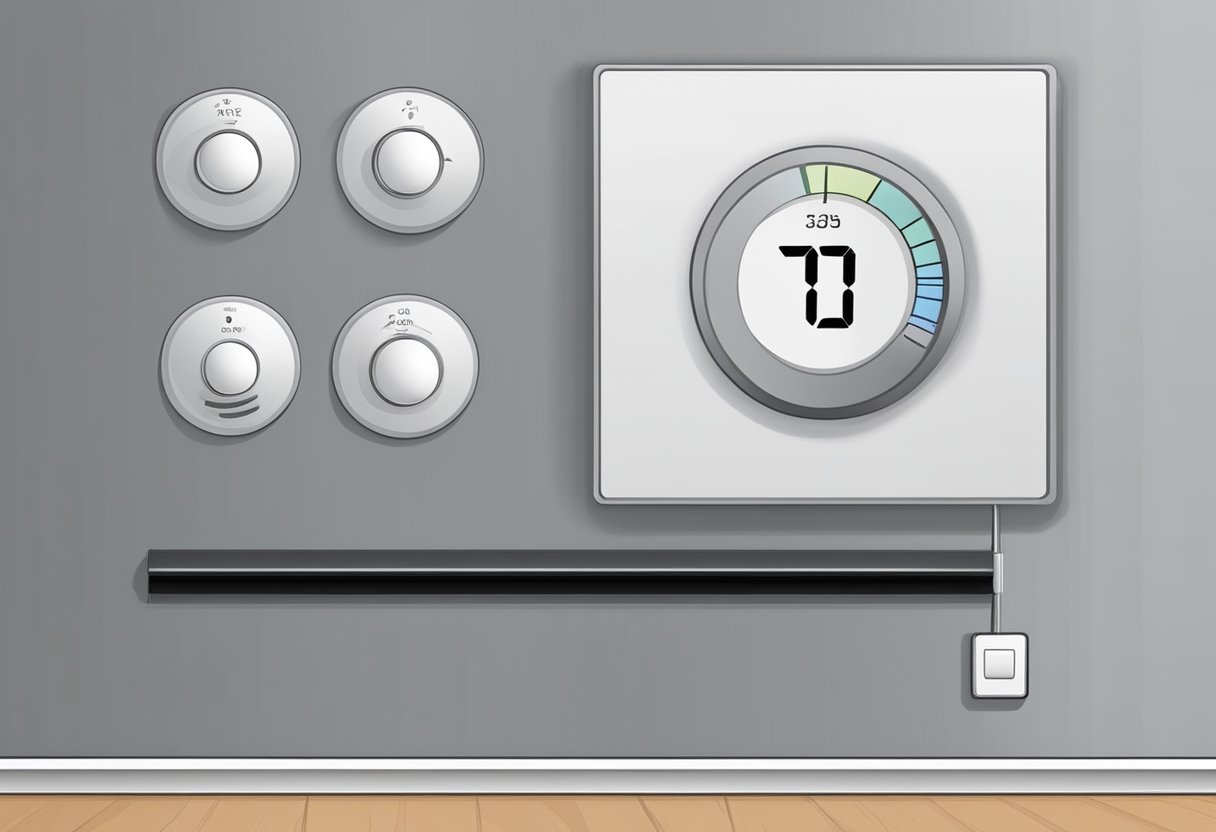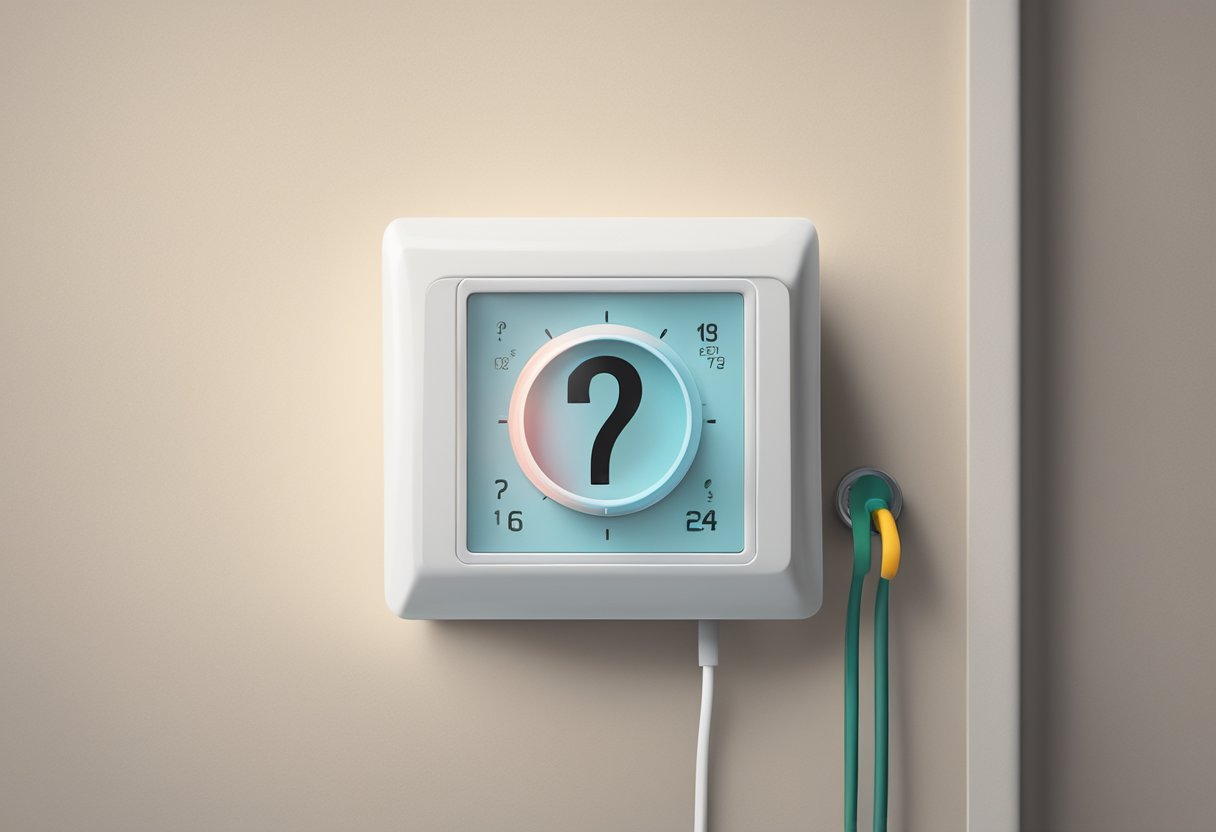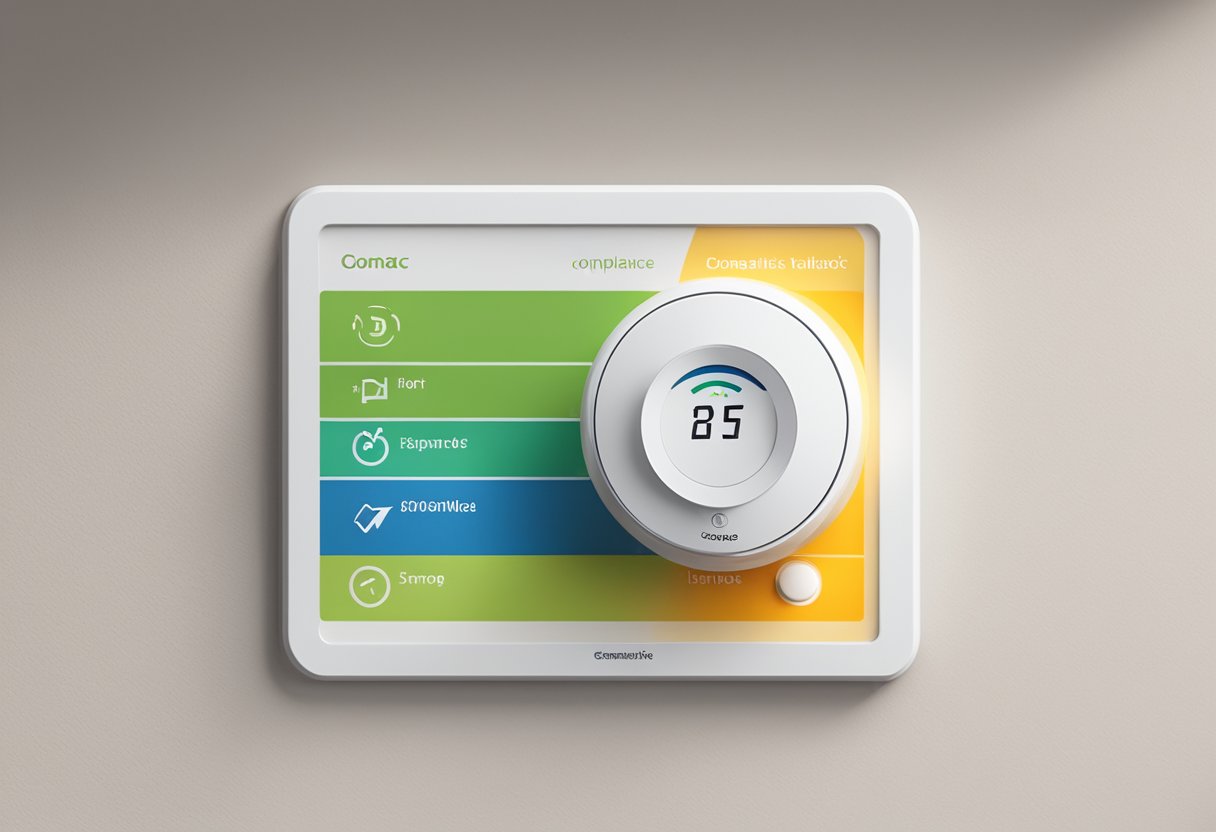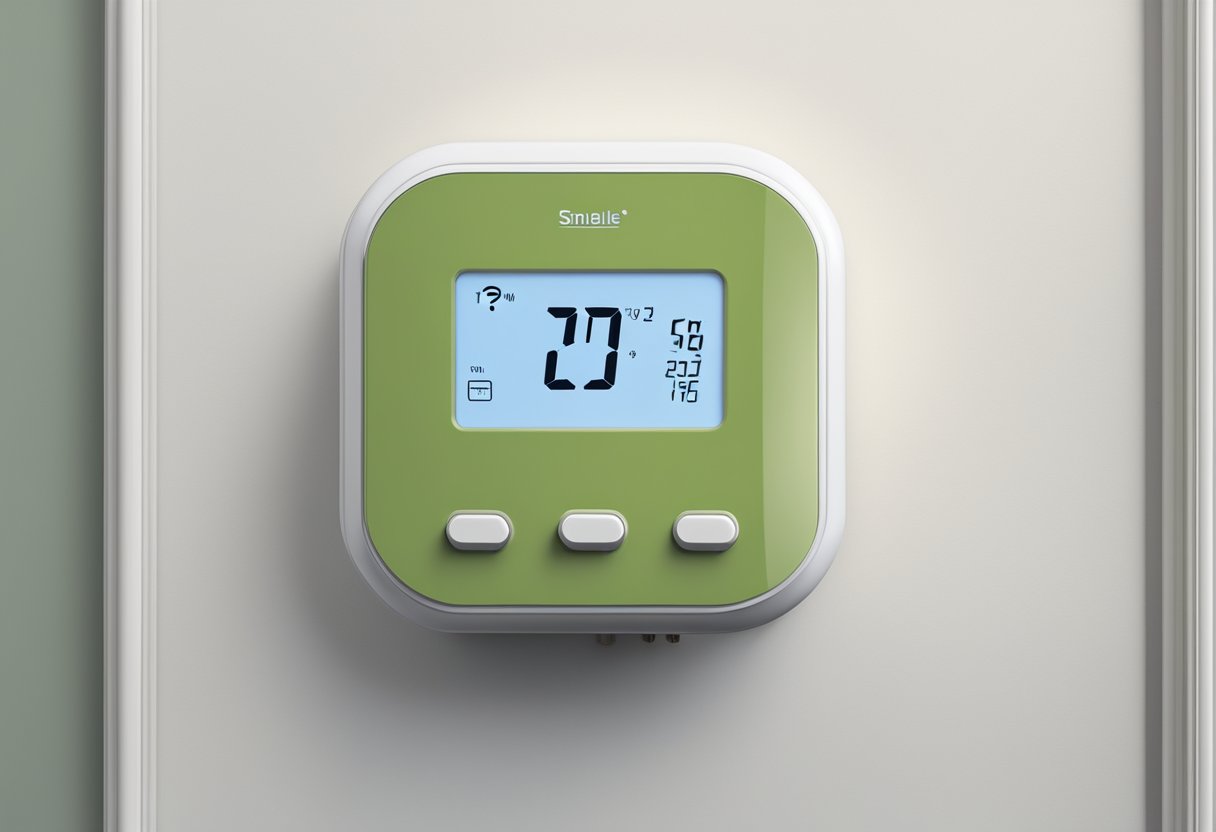Check Best Thermostat Pricing in Amazon
** As an Amazon Associate, I earn from qualifying purchases.
It is common knowledge that a thermostat is an essential component of a heating and cooling system in a home. It regulates the temperature and ensures that the HVAC system functions efficiently. However, some homeowners may wonder if it is illegal to not have a thermostat installed in their home.

The answer to this question is not straightforward. In most cases, building codes and regulations require that a thermostat be installed in a home. However, there is no federal law that mandates the use of a thermostat. The legality of not having a thermostat installed in a home may depend on the local building codes and regulations in the area.
Legality of Thermostat Requirements

Building Codes and Regulations
Building codes and regulations vary by state and locality. However, most building codes require that all habitable spaces have a heating system that is capable of maintaining a minimum temperature of 68°F. This means that a thermostat is typically required in order to comply with building codes.
In addition, some building codes may require specific types of thermostats, such as programmable thermostats, in order to comply with energy efficiency requirements.
Tenant-Landlord Laws
Tenant-landlord laws also vary by state and locality. In general, landlords are required to provide a habitable living space for their tenants. This includes providing a functioning heating system that is capable of maintaining a minimum temperature of 68°F.
If a landlord fails to provide a functioning heating system, the tenant may have the right to withhold rent or terminate the lease. However, it is important to note that the specific laws and procedures for handling these situations vary by state and locality.
Energy Conservation Acts
Some states have enacted energy conservation acts that require the use of certain types of thermostats in order to improve energy efficiency. For example, California has enacted the Title 24 Building Energy Efficiency Standards, which require the installation of programmable thermostats in new residential and nonresidential buildings.
In addition, some utility companies may offer rebates or incentives for the installation of certain types of thermostats, such as smart thermostats, in order to encourage energy conservation.
Overall, while it may not be illegal to not have a thermostat in all cases, building codes, tenant-landlord laws, and energy conservation acts may require the installation of a thermostat in order to comply with regulations and improve energy efficiency.
Consequences of Not Having a Thermostat

Legal Repercussions
In most jurisdictions, building codes require that a thermostat be installed in any new construction or major renovation. Failure to comply with these codes can result in fines or other legal penalties. Additionally, landlords may be held liable if tenants suffer harm due to inadequate heating or cooling, and not having a thermostat can be seen as evidence of negligence.
Energy Efficiency Impacts
Not having a thermostat can lead to significant energy waste and higher utility bills. Without a thermostat, there is no way to regulate the temperature in a building, which means that heating or cooling systems may run constantly, even when they are not needed. This can result in unnecessary energy consumption and increased greenhouse gas emissions.
Comfort and Health Considerations
Without a thermostat, it can be difficult to maintain a comfortable indoor environment. Temperatures may fluctuate widely, leading to discomfort and even health problems. In extreme cases, lack of temperature control can lead to hypothermia or heat stroke. Additionally, without a thermostat, there is no way to control indoor humidity levels, which can lead to mold growth and other indoor air quality issues.
Overall, not having a thermostat can have serious consequences, both legally and practically. Building owners and landlords should ensure that their buildings are equipped with proper temperature control systems to avoid potential legal and financial penalties, as well as to promote energy efficiency, comfort, and health.
Exceptions and Exemptions

There are some exceptions and exemptions to the requirement of having a thermostat in a building. These include historical buildings, temporary structures, and geographical considerations.
Historical Buildings
Historical buildings that have been designated as landmarks or are listed on the National Register of Historic Places may be exempt from the requirement of having a thermostat. This exemption is granted to preserve the historical integrity of the building and to avoid damaging the building’s original features.
Temporary Structures
Temporary structures such as tents and trailers may also be exempt from the requirement of having a thermostat. These structures are not intended for permanent use and may not have the necessary wiring or infrastructure to support a thermostat.
Geographical Considerations
Some geographical locations may be exempt from the requirement of having a thermostat due to their climate. For example, buildings located in areas with consistently warm temperatures may not require a thermostat as the temperature remains relatively stable year-round.
It is important to note that these exemptions and exceptions may vary depending on local building codes and regulations. It is recommended to consult with a licensed professional to determine the requirements for a specific building or structure.
Installation and Compliance

Thermostat Installation Standards
When it comes to installing a thermostat, there are several standards that must be followed. These standards are in place to ensure that the thermostat is installed safely and correctly.
Check Best Thermostat Pricing in Amazon
** As an Amazon Associate, I earn from qualifying purchases.
Firstly, the thermostat must be installed by a licensed electrician or HVAC technician. This ensures that the installation is done correctly and safely.
Secondly, the thermostat must be installed in a location that accurately represents the temperature of the room. This means that it should not be installed in a location that is affected by direct sunlight, drafts, or other factors that could affect the temperature reading.
Thirdly, the thermostat should be installed at a height of approximately 5 feet from the floor. This ensures that the temperature reading is accurate and representative of the room as a whole.
Compliance Checks and Certifications
In addition to following the installation standards, it is important to ensure that the thermostat is compliant with any relevant regulations or certifications.
For example, in the United States, thermostats must be compliant with the Energy Star program. This program sets standards for energy efficiency and ensures that the thermostat is using energy in an efficient and environmentally friendly way.
Additionally, there may be local or state regulations that dictate the type of thermostat that must be installed. For example, in California, all new thermostats must be compatible with the state’s demand response program.
To ensure compliance, it is important to check the thermostat’s packaging or documentation for any relevant certifications or compliance information. It is also recommended to consult with a licensed professional to ensure that the thermostat is compliant with all relevant regulations and standards.
Alternatives to Traditional Thermostats

Smart Thermostats
Smart thermostats are an excellent alternative to traditional thermostats. They are programmable and can be controlled remotely. They can also learn your schedule and adjust the temperature accordingly. Some popular brands of smart thermostats include Nest, Ecobee, and Honeywell.
Smart thermostats are easy to install and can save you money on your energy bills. They can also be integrated with other smart home devices, such as Amazon Echo or Google Home, allowing you to control your thermostat with your voice.
Manual Temperature Control Methods
If you don’t want to invest in a smart thermostat, there are still several manual temperature control methods you can use. One of the most effective methods is to simply turn down the thermostat when you’re not at home or when you’re sleeping.
Another option is to use a space heater or a fan to control the temperature in specific areas of your home. This can be particularly useful if you spend most of your time in one room.
Finally, you can also use curtains or blinds to control the amount of sunlight that enters your home. This can help keep your home cooler in the summer and warmer in the winter.
Overall, there are several alternatives to traditional thermostats that can help you save money on your energy bills and reduce your environmental impact. Whether you choose a smart thermostat or a manual temperature control method, it’s important to find a solution that works for you and your lifestyle.
Landlord thermostat laws

Landlords have certain responsibilities when it comes to providing a comfortable living environment for their tenants. This includes ensuring that the temperature inside the rental unit is regulated and maintained at a reasonable level.
In most states, landlords are required to provide a working thermostat in the rental unit. This is typically outlined in the state’s housing code or landlord-tenant laws. Landlords who fail to provide a working thermostat could be subject to fines or legal action by their tenants.
Additionally, landlords may be required to provide heating and cooling systems that meet certain standards. For example, some states require landlords to provide heating systems that can maintain a temperature of at least 68 degrees Fahrenheit during the winter months.
It is important for landlords to familiarize themselves with their state’s specific laws and regulations regarding thermostats and heating systems. By doing so, they can ensure that they are in compliance with the law and avoid any potential legal issues with their tenants.
Check Best Thermostat Pricing in Amazon
** As an Amazon Associate, I earn from qualifying purchases.


